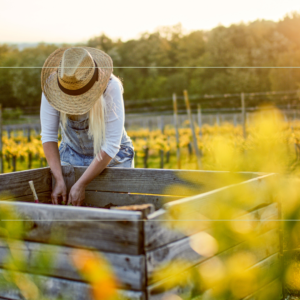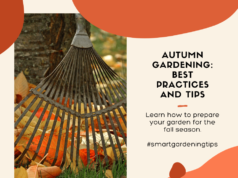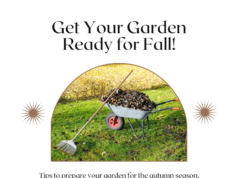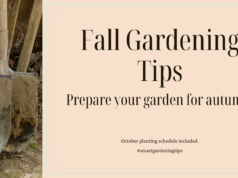How to Choose the Right Spot for Planting

Ready to start a garden but unsure where to begin? Well, look no further! In this article, we’ll guide you through the process of selecting the perfect spot for your plants.
Picture this: a thriving garden full of beautiful blooms and bountiful harvests. To achieve this, we’ll discuss factors like sunlight exposure, drainage, soil quality, and even the impact of nearby trees and structures.
With these tips, you’ll be well on your way to creating the garden of your dreams. Let’s get started!
Key Takeaways
– Consider the factors such as drainage, sunlight exposure, and microclimate when choosing the location for your garden.
– Conduct a soil test to determine the pH and nutrient levels of the soil in the chosen planting site.
– Take into account the hardiness zone of your area and choose plants that are suitable for the climate.
– Consider the water source and ensure that the chosen spot has access to sufficient water for plant growth.
Factors to Consider When Choosing a Planting Site
When choosing a planting site, it’s important to regularly consider the factors that will impact the success of your garden.
The first factor to consider is the garden location. You want to choose a spot that receives adequate sunlight exposure for your plants to thrive.
Additionally, conducting a soil test is crucial to determine the pH level and nutrient content of the soil. This will help you determine if any amendments are needed.
Another important factor is drainage. You want to avoid areas with poor drainage as it can lead to root rot and other plant diseases.
Lastly, consider the microclimate of the location. Factors such as nearby buildings or trees can create microclimates that affect temperature and wind patterns.
Importance of Sun Exposure for Plant Growth
To ensure the success of your garden, it is crucial to understand the importance of sun exposure for plant growth. Regularly considering factors such as the amount of sunlight your plants receive will greatly impact their overall health and productivity.
| Hours of Sun | Sun Exposure | Plant Growth | Location of Your Garden |
|————–|————–|————–|————————|
| 6+ | Full sun | Optimal | South-facing |
| 4-6 | Partial sun | Moderate | East or West-facing |
| <4 | Shade | Limited | North-facing |
Plants require a certain amount of sunlight to photosynthesize and produce energy for growth. Most vegetables, for example, thrive in full sun, which is typically defined as six or more hours of direct sunlight per day. On the other hand, some plants, such as shade-loving ornamentals, can tolerate limited sun exposure. When selecting the location for your garden, consider the orientation of the sun and choose a spot that provides the appropriate amount of sunlight for the plants you intend to grow.
Assessing Soil Conditions for Optimal Planting
To ensure optimal planting, assess the soil conditions in your chosen planting spot. Here are four important factors to consider when assessing soil conditions:
1. Soil Surface: Examine the texture and structure of the soil surface. Is it loose and crumbly or compacted and hard? Loose soil allows for better root penetration and water drainage.
2. pH of the Soil: Test the pH level of the soil to determine its acidity or alkalinity. Different plants require different pH levels for optimal growth. Adjusting the pH can help ensure that your plants receive the necessary nutrients.
3. Nutrient Content: Assess the nutrient content of the soil. Plants require various nutrients, such as nitrogen, phosphorus, and potassium, for healthy growth. Conduct a soil test to determine if any nutrient deficiencies or imbalances exist.
4. Drainage: Evaluate the soil’s drainage capacity. Excessive water retention can lead to root rot, while poor drainage can cause waterlogged soil. Aim for a balance between water retention and drainage to promote healthy plant growth.
Considering the Microclimate of Your Garden Location
Consider the microclimate of your garden location by assessing the specific environmental conditions that will affect plant growth. When choosing the right location for your vegetable garden, there are several factors to consider. One important consideration is the microclimate of the area, which refers to the unique climate conditions that exist in a small, localized area. To help you understand the microclimate of your garden location, here is a table outlining the key factors to consider:
| Microclimate Factor | Description | Impact on Plant Growth |
| — | — | — |
| Sun Exposure | The amount of sunlight the area receives | Determines which plants will thrive
| Temperature | The average and extreme temperatures | Affects the hardiness of plants
| Wind | The strength and direction of the wind | Can dry out plants or cause damage
| Moisture | The amount of rainfall or irrigation the area receives | Determines watering needs
| Soil Type | The composition and fertility of the soil | Influences nutrient availability
Choosing the Right Plants for Your Garden
When choosing plants for your garden, it’s important to consider the specific needs and requirements of each plant. Here are four things to consider when choosing the right plants for your new garden:
1. Planting site: Take into account the location of your garden and the conditions it provides, such as sunlight exposure, soil type, and drainage. Different plants thrive in different environments, so choose plants that will do well in your specific planting site.
2. New garden: If this is your first garden, it’s a good idea to start with low-maintenance plants that are easy to grow. This will help you gain confidence and experience as a gardener.
3. Choosing the right plant: Consider the purpose of your garden. Are you looking to grow vegetables, flowers, or a combination of both? Select plants that will fulfill your desired goals.
4. Things to consider: Think about the amount of time and effort you’re willing to put into maintaining your garden. Some plants require more care and attention than others, so choose plants that align with your gardening style and available time.
Evaluating the Drainage and Water Source for Your Garden
Before you start planting, it’s important to evaluate the drainage and water source for your garden.
Evaluating the drainage of your garden spot is crucial because proper drainage ensures that excess water doesn’t accumulate and drown your plants. You can evaluate the drainage by observing the area after rainfall or by performing a simple soil percolation test.
Additionally, assessing the water source for your garden is essential to ensure that your plants receive adequate moisture. Consider if you have access to a nearby water source, such as a hose or irrigation system, or if you’ll need to rely on natural rainfall.
By evaluating both the drainage and water source for your garden, you can create optimal growing conditions for your plants.
Now, let’s consider the impact of nearby trees and structures on your garden.
Considering the Impact of Nearby Trees and Structures
Take into account the influence of nearby trees and structures on your garden. Considering the impact of nearby trees and structures is crucial when choosing the right spot for planting.
Here are four key factors to keep in mind:
1. Garden bed placement: Determine where your garden bed will be located in relation to the nearby trees and structures. Make sure it receives adequate sunlight and isn’t shaded by tall trees or buildings.
2. Plant hardiness zone: Check the plant hardiness zone of your area and see if the nearby trees and structures create microclimates that could affect the plants’ ability to thrive.
3. Root competition: Consider the root systems of nearby trees and how they may compete for water and nutrients with your garden plants.
4. Shade and wind protection: Evaluate how nearby trees and structures can provide shade or wind protection to your garden, which can be beneficial for certain plant varieties.
Considering these factors will help you choose the right spot for planting and ensure the success of your garden.
In the next section, we’ll provide tips for planning and designing your garden layout, taking into account the impact of nearby trees and structures.
Tips for Planning and Designing Your Garden Layout
To optimize your garden layout, consider incorporating a variety of plant types to create a visually appealing and diverse space. When planning and designing your garden layout, there are several tips to keep in mind. First, choose the right spot for planting by considering the location for your garden. Take into account the hardiness zone of your area and the types of plants that are likely to thrive there. Next, think about the layout of your garden and how different plants will complement each other. Consider the height, spread, and flowering times of the plants to create a balanced and harmonious design. Finally, pay attention to the sun and shade patterns in your garden to ensure that each plant receives the appropriate amount of sunlight. By following these tips, you can create a beautiful and functional garden layout.
| Tip | Description | Example |
| — | — | — |
| Choose the right spot for planting | Consider the location for your garden and the hardiness zone of your area | Planting tomatoes in a sunny spot that receives at least 6 hours of direct sunlight per day
| Consider the layout of your garden | Think about the height, spread, and flowering times of different plants to create a balanced design | Planting tall sunflowers at the back of a garden bed and low-growing marigolds at the front
| Pay attention to sun and shade patterns | Ensure that each plant receives the appropriate amount of sunlight | Planting shade-loving hostas under a tree and sun-loving roses in an open area
FAQ
Q: How do I choose the right spot for planting?
A: When choosing a spot for planting, there are several things to consider. You need to think about the garden location, the amount of sunlight the spot gets, the drainage of the soil, and the microclimate of the area.
Q: What are some factors to consider when choosing a planting site?
A: Some factors to consider when choosing a planting site are the amount of sunlight, the soil’s drainage capabilities, the proximity to water sources, and the microclimate of the area.
Q: How important is the drainage of the soil?
A: The drainage of the soil is very important for the success of your garden. Plants need well-draining soil to avoid root rot and other water-related issues. If the soil in the chosen spot doesn’t drain well, you may need to improve it by adding compost or creating raised beds.
Q: What is compost and how can it help in choosing the right spot for planting?
A: Compost is organic matter that has decomposed and is rich in nutrients. Adding compost to your soil can improve its fertility and drainage, making it easier for plants to thrive. If the chosen spot has poor soil, adding compost can help create a better environment for your plants.
Q: How does the microclimate affect plant growth?
A: The microclimate refers to the specific climate conditions of a small area, such as temperature, light, and wind patterns. Different plants thrive in different microclimates, so it’s important to choose a spot that matches the requirements of the plants you want to grow.
Q: Can I plant trees in any spot in my garden?
A: Not all spots in your garden are suitable for planting trees. You need to consider factors like the growth potential of the tree species, the space available for the tree to grow, and any potential obstructions like power lines. It’s important to choose the right spot to ensure the tree can grow well and won’t cause any issues in the future.
Q: Should I consider the type of plants I want to grow when choosing a planting spot?
A: Yes, it’s important to consider the type of plants you want to grow when choosing a planting spot. Some plants require full sunlight, while others prefer shade. Make sure to choose a spot that suits the needs of the plants you plan to grow.
Q: What are some other things to consider when choosing a spot for a new garden?
A: When choosing a spot for a new garden, you should also consider factors like the proximity to water sources, the availability of sunlight, the accessibility of the spot, and any potential pest issues in the area.
Q: How can I make my garden successful?
A: To make your garden successful, you need to choose the right spot for planting, provide the necessary care and maintenance, and select plants that are appropriate for your climate and soil conditions. Planning out your garden and considering all the necessary factors will greatly increase your chances of success.
Q: How often should I water my garden?
A: The frequency of watering your garden depends on several factors, such as the type of plants you have, the soil type, and the weather conditions. As a general rule, most gardens require about 1 inch of water per week. However, you should always monitor the moisture level of the soil and adjust your watering schedule accordingly.
Conclusion
Now that you know how to choose the right spot for planting, you can confidently start your garden and watch it flourish.
Don’t let the fear of not having a green thumb hold you back. With proper planning and consideration of factors like sunlight, soil quality, and drainage, you can create a beautiful and thriving garden that will bring you joy for years to come.
So grab your gardening tools and get ready to dig in!
















